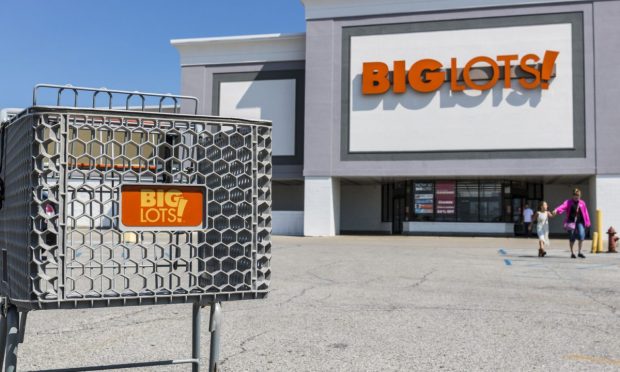Big Lots CEO Says Higher-Earners Turn to Big Lots for Bargains

Off-price and discount retailers are responding to an increasingly clear divide between deal chasers compared to other bargain shoppers as the opportunistic value-seeking trend has become more defined.
This dynamic featured prominently in the fourth quarter of fiscal 2022 of Ohio-based discount chain Big Lots, which spelled out its efforts to court deal chasers during its earnings call Thursday (March 2) for the three months ended Jan. 28.
“We will own bargains and treasures,” Big Lots President and CEO Bruce Thorn said. “We continue to make progress on accelerating our efforts to optimize and differentiate our assortment with more great bargains and exciting products as it relates to bargains which are close-out items off-price brands and limited-time deals.”
Taking a hit in Q4 due to the sudden closure of its largest vendor, United Furniture Industries, maker of the Broyhill and Real Living furniture brands, and causing product shortages in that category, Big Lots is moving to optimize for deal-chasers in its omnichannel strategy.
Big Lots is seeking alternate suppliers to manufacture Broyhill and Real Living brands.
Omnichannel Segmentation Favors Bargain Hunters
In online activities, Thorn said, “we are continuing our work to remove friction with improved site navigation and to improve the overall customer experience. For example, we think there’s an opportunity to reinvent the customer experience from a one-size-fits-all to a segmented customer journey, such as one for deal-seekers versus the furniture buyer.”
See also: Discount Retailers See New Wave of Cost-Conscious Shoppers
Thorn added that Big Lots is also well positioned to provide value as a trade-down destination.
“Our private brands, especially Broyhill, will play a key role in increasing our appeal,” he said, noting that the typical seasonal customer has a household income that is two times higher than our core customer.
“So we see that category as a year-round trade-down opportunity,” he said on the call.
Merchandising is core to new efforts to segment deal chasers, with Thorn saying, “we have simplified the endcaps which are now nearly entirely focused on bargains and treasures rather than mostly essentials,” a strategy that he said is “already performing much better.”
He added, “For example, in furniture, most of our opening price points are now at pre-COVID levels, and we are making these bargains even easier to find with endcaps and marketing that are clearer than ever before and ticketing that shows comparable value. These initiatives are still rolling out, but we’re confident that as they do, they will help drive significant improvement in our business. In fact, we see that our end caps featuring bargains outperform our essentials and caps and weekly average sales by over 30%.”
Read: Dollar General Blames Winter Storm for Slowing Q4 Same-Store Sales Growth
Talking Directly to Deal-Seekers
In January, Big Lots began rolling out comparable value messaging in marketing signage, website, and pricing tags to showcase value. Thorn said, “Currently the comparable values focus on items in display locations and our major closeouts, but they will be expanding across all of our bargains over the next six months, and they are appearing in our online business.”
During the Q4 earnings call, CFO Jonathan Ramsden said Big Lots sold 20 owned stores and an unoccupied land parcel “and the buyer also relieved as of the leases on two loss-making speaking stores.” Big Lots operates roughly 1,400 stores in 47 states.
The deal-seeker emerged as a key shopper persona in 2022 as seen in results from other off-price retailers including Dollar General, Dollar Tree, Five Below, and Ollie’s. This group exhibits different behaviors, especially when shopping online or in omnichannel mode.
According to the study “At The Checkout: Deal-Chasers Versus Loyal Customers,” a PYMNTS and Checkout.com collaboration, “Deal-chasers tend to be more patient: 28% took 24 hours or more to complete their most recent online purchase, and 18% took a week or longer to finalize their purchase.”
For all PYMNTS retail coverage, subscribe to the daily Retail Newsletter.
